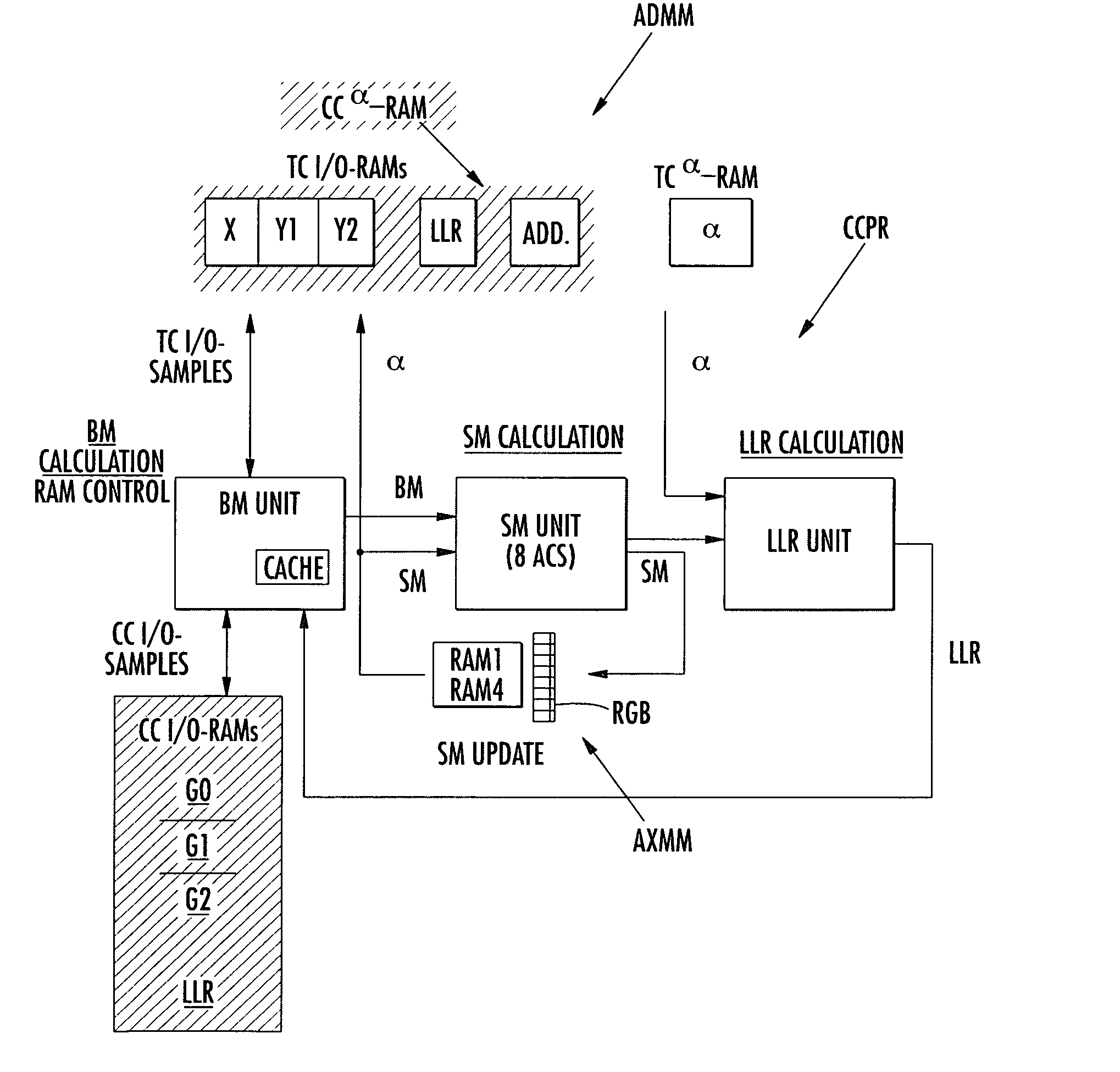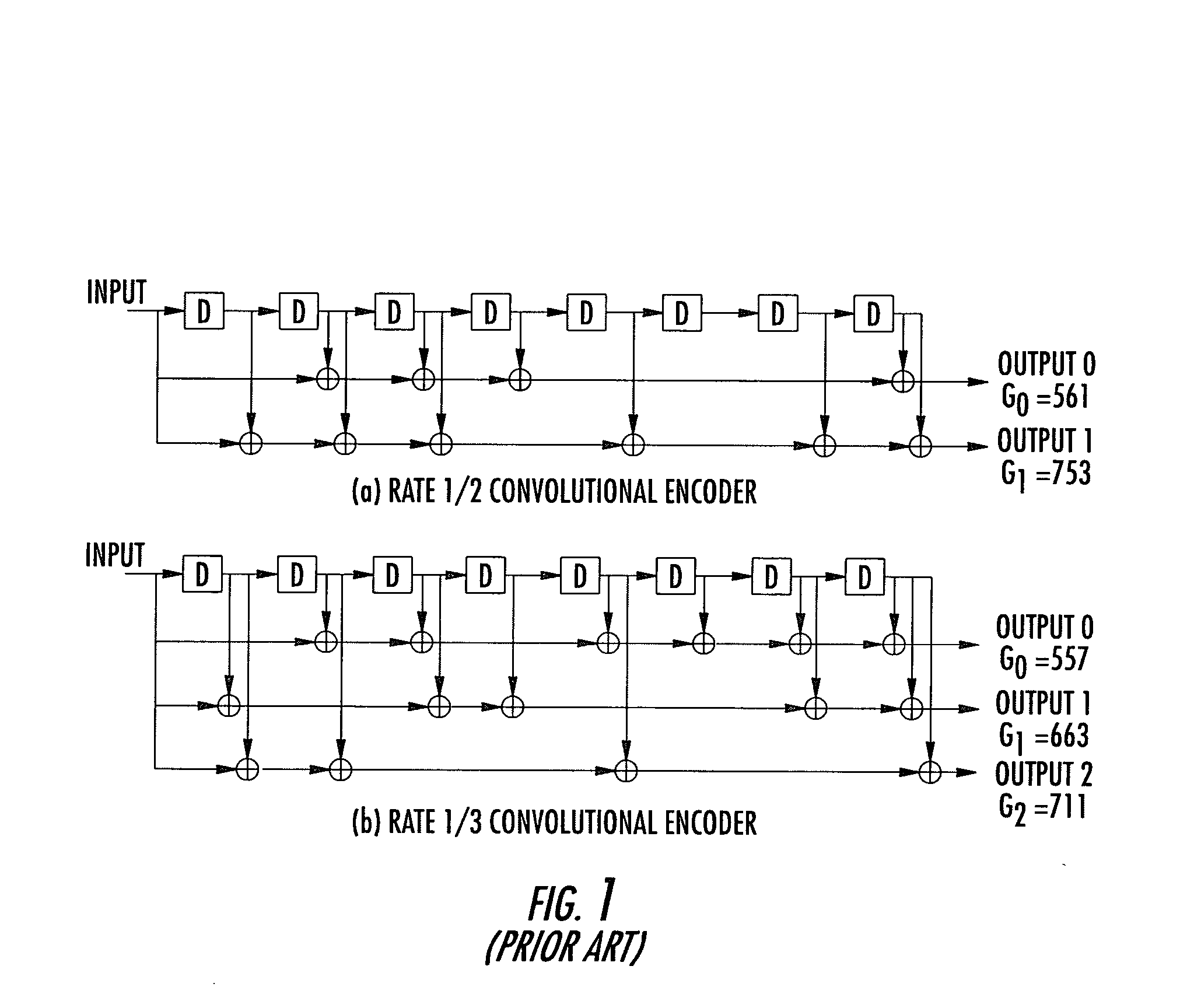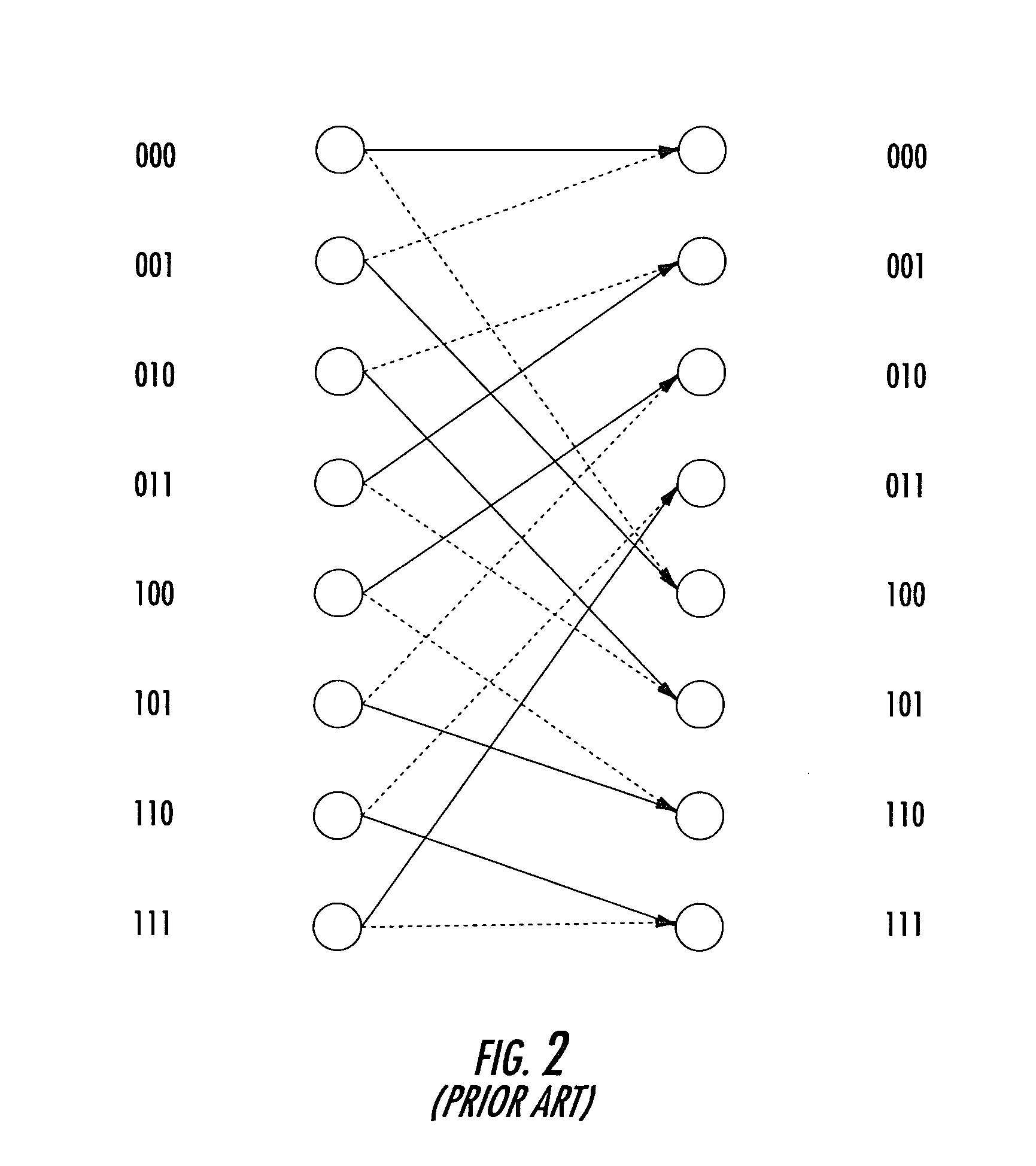Combined turbo-code/convolutional code decoder, in particular for mobile radio systems
a combination turbo-code and convolutional code technology, applied in the field of channel coding and decoding techniques, can solve the problems of large memory and high cost of individual decoder implementation
- Summary
- Abstract
- Description
- Claims
- Application Information
AI Technical Summary
Benefits of technology
Problems solved by technology
Method used
Image
Examples
Embodiment Construction
1. Encoding
1.1 General Considerations And Convolutional Encoding
[0052] Convolutional encoding is performed by calculating the modulo-2 sum of the input values of the current and / or selected previous time steps. Implementation therefore is straightforward and mainly includes a shift register and a couple of exclusive-OR gates. Through the way these are switched, different kinds of convolutional codes can be realized:
[0053] Systematic Codes: One of the output streams is equal to the input stream, which is the systematic information.
[0054] Non-Systematic Codes (NSC): Each output is a parity information. Parity information is produced by taking the modulo-2 sum of shift register entries stating the history of the encoding process.
[0055] Recursive Codes: A special parity signal is produced and fed back in conjunction with the systematic input.
[0056] Non-Recursive Codes: No such feedback loop exists.
[0057] An instance of a convolutional encoder is defined by a combination of thes...
PUM
 Login to View More
Login to View More Abstract
Description
Claims
Application Information
 Login to View More
Login to View More - R&D
- Intellectual Property
- Life Sciences
- Materials
- Tech Scout
- Unparalleled Data Quality
- Higher Quality Content
- 60% Fewer Hallucinations
Browse by: Latest US Patents, China's latest patents, Technical Efficacy Thesaurus, Application Domain, Technology Topic, Popular Technical Reports.
© 2025 PatSnap. All rights reserved.Legal|Privacy policy|Modern Slavery Act Transparency Statement|Sitemap|About US| Contact US: help@patsnap.com



